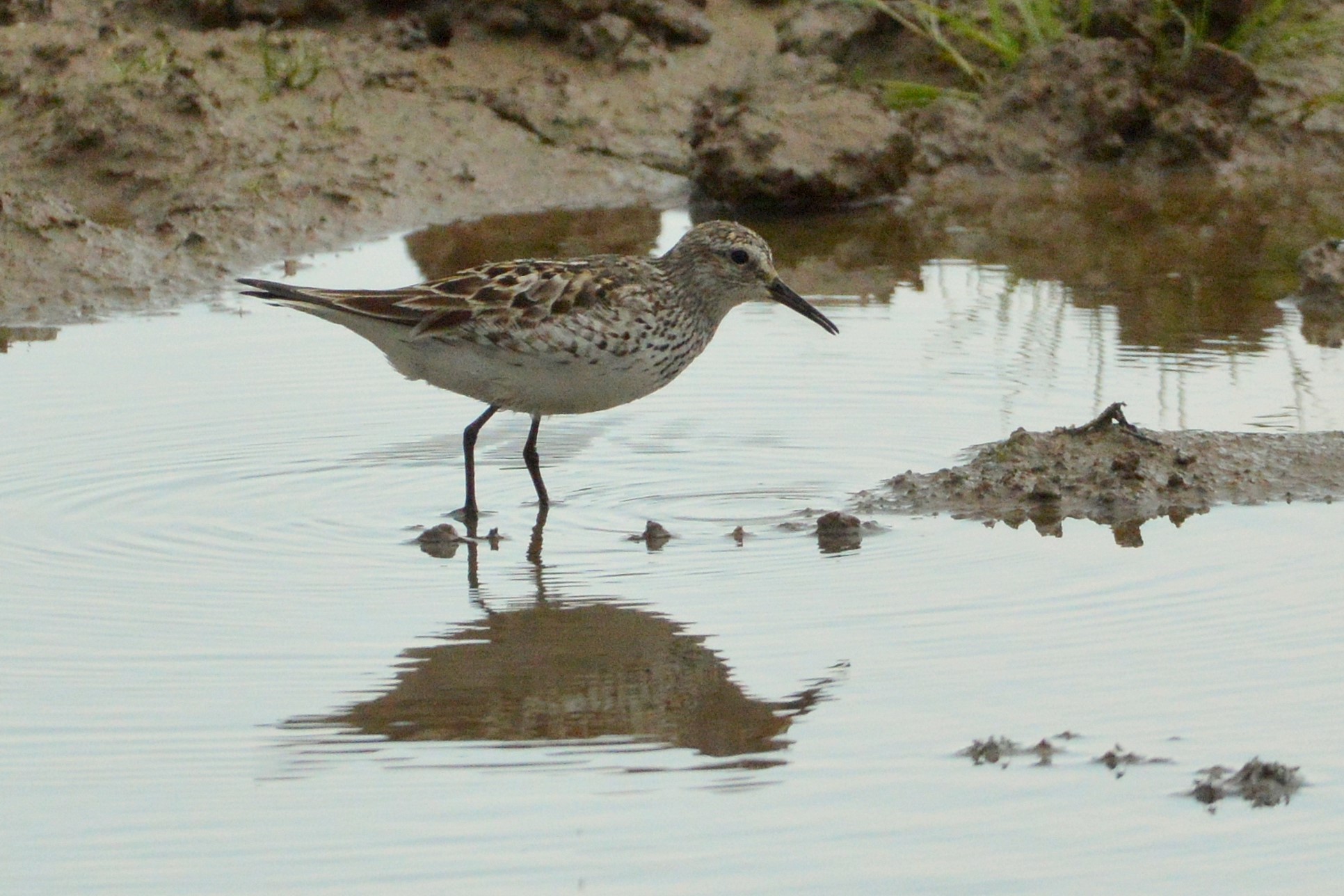
The birds migrate with both nonstop and short-distance multiple-stop flights. They are rare but regular vagrants to western Europe and a rare vagrant to Australia. The white-rumped sandpiper has also been spotted in Venezuela, Suriname, Brazil and Paraguay during its migration. Many shorebirds concentrate in this area due to the abundance of intertidal invertebrates, especially clams. It also frequently visits Fracasso Beach, Argentina. After breeding in northern Canada and Alaska, it flies over the Atlantic Ocean to spend the majority of its non-breeding period in South America, particularly along the Patagonian coast in both Chile and Argentina. The white-rumped sandpiper is a nearctic migrant. They are considered one of the most extreme long distance migrants in the world, traversing the entire continent of North America in the span of one month. They are a long distance migrant, wintering in southern South America and the Caribbean. In general, they tend to avoid sandy beaches and fast moving water. During the winter months they inhabit a variety of freshwater and saltwater habitats such as lagoons, estuaries and marshes. They can be found in various types of wetlands while migrating. More specifically, they live in the marshy, heavily vegetated, hummocky arctic tundra of Alaska and Canada during the breeding season. The white-rumped sandpiper inhabits relatively vegetated patches of the tundra. There is also a thin white stripe on the wing and a row of marks on the flanks below the wings. Baird's sandpiper also shows this trait but can be distinguished by the lack of a white rump. Its long wings extend beyond the tail by about a quarter inch.
White rumped sandpiper Patch#
The white patch on the rump can be seen while the bird is in flight. The two primary features used to identify this bird in the field are its long wings and its white rump. The underparts and supercilium are white, the crown is brownish in color, and the face is pale Standard Measurements

The breast is finely streaked and there is a white "V" on its back. These have brown edges towards the scapulars and whiter edges towards the wing coverts. The juvenile plumage features black-based feathers on the back and wing coverts. The supercilium is white, while the crown and eyeline are darker. The underparts are white but the breast is dark grey. In adult basic plumage, the upperparts are a dark grey and at the centers there are black feathers. The breast and flanks are streaked and the underparts are white.

The supercilium is pale, there are black feathers on the back and there are grey edges on the wing coverts. In adult alternate plumage, the crown and face have a brownish tinge. The plumage is much less distinct during the winter however, during all seasons males and females remain similar in their appearance. This bird is often mistaken with many similar-looking sandpipers that live in its range or along its migration path. Its beak is of medium length, thin and dark, and its legs are very dark. The top of its body is a dull grey-brown color and it has a white eye stripe. The white-rumped sandpiper is a relatively small bird measuring only 7.8 in (20 cm).


The specific fuscicollis is from Latin fuscus, "dusky" and New Latin collis, "necked ". The genus name is from Ancient Greek kalidris or skalidris, a term used by Aristotle for some grey-coloured waterside birds. It is classified as monotypic species, meaning that no population differentiation or subspecies have been described. Its family, Scolopacidae, encompasses all sandpipers, and as a stint it is classified in the genus Calidris. The white-rumped sandpiper is placed in the order Charadriiformes along with gulls, alcids, plovers and oystercatchers.


 0 kommentar(er)
0 kommentar(er)
